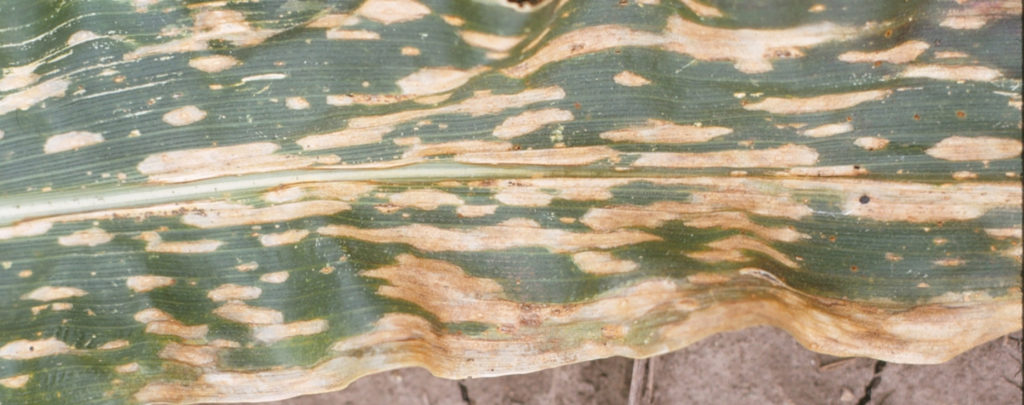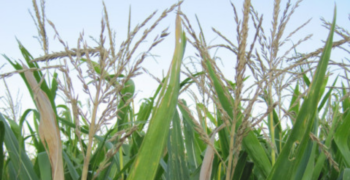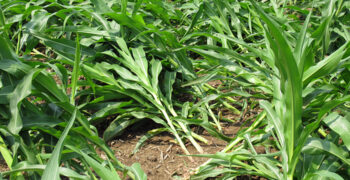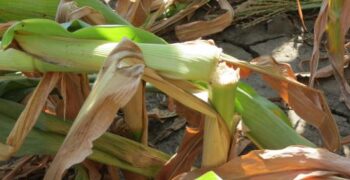Background:
Southern Corn Leaf Blight is formed from the fungus Bipolaris maydis. There are 3 different races of SCLB, they are T, O, C. In 1970 there was an outbreak of SCLB race T that is related to corn hybrids that had Texas malesterile cytoplasm that releases a T- toxin, which is not commonly used in production in the midwest but in other parts of the country. Race C has been reported in Asia and race O can contaminate hybrids with normal cytoplasm in the United States and Canada. Of the 3 races of SCLB, race O will only affect the leaves of the corn plant, while race T can infect the leaves, husks, stalks, leaf sheaths, shanks ears, and cobs.
Scouting:
Symptoms usually will show up around VT to R4. Race O and T also have different lesions. Race O lesions are tan with reddish brown and somewhat retangular and are ¼ inch wide by 1 inch long. While race T are ¼-½ inch wide by ¼-¾ inch long and are reddish brown rectangular shaped lesions. Ear lesions will produce a gray almost black lesions on the husk that will get into kernels looking like blak feltlike mold. Stalk and leaf infections will generally start out as purple spots and will form tan grayish centers. Laboratory tests may be needed to distinguish between the different races. Races O and T will overwinter in crop residue and race T also in corn kernels if infected. Spores are generally produced in humid weather and can be spread by splashing water and wind. Disease will likely spread more rapidly in warm, tropical climates and can increase over periods of cloudy weather with rain showers.
Management:
- Picking a hybrid that is resistant. These days most hybrids are resistant to SCLB.
- Rotating Crops
- Tillage, using a chisel plow to bury and break down residue
- Fungicides are labeled for use against SCLB



